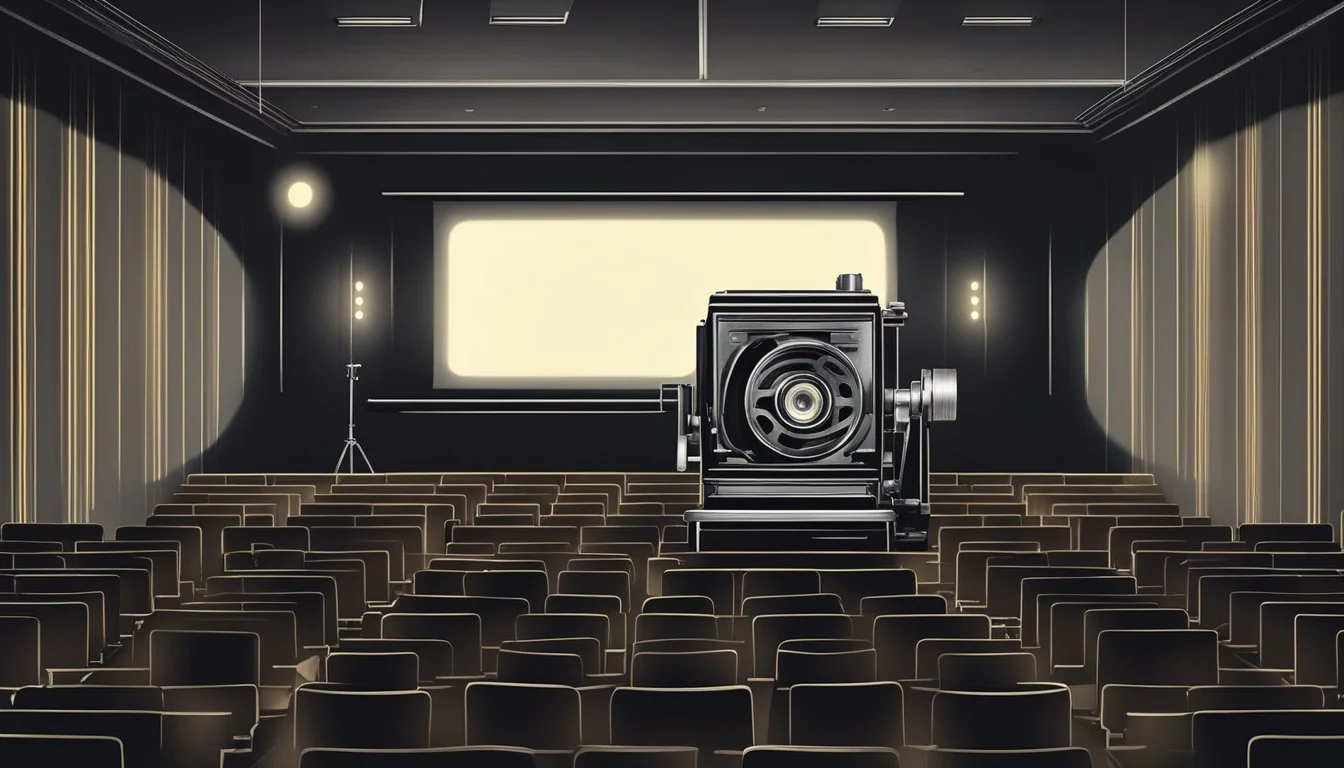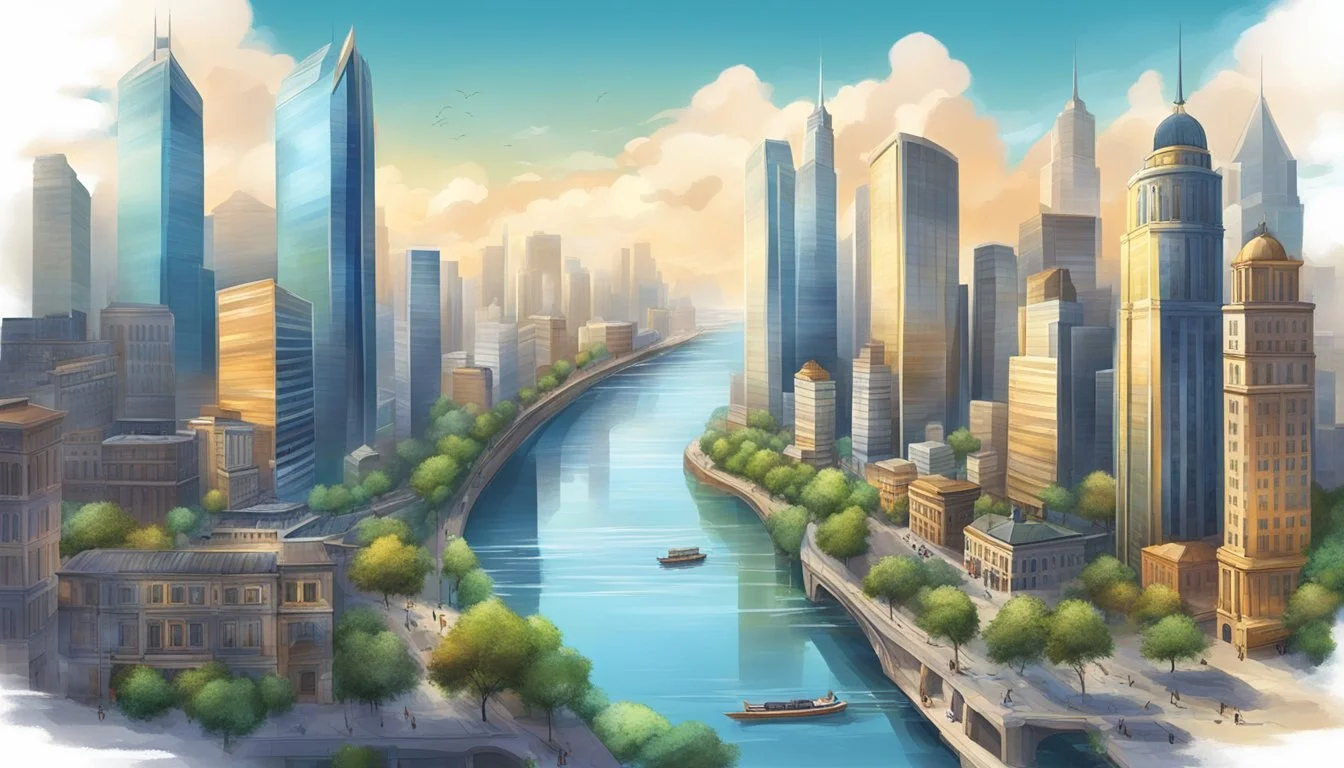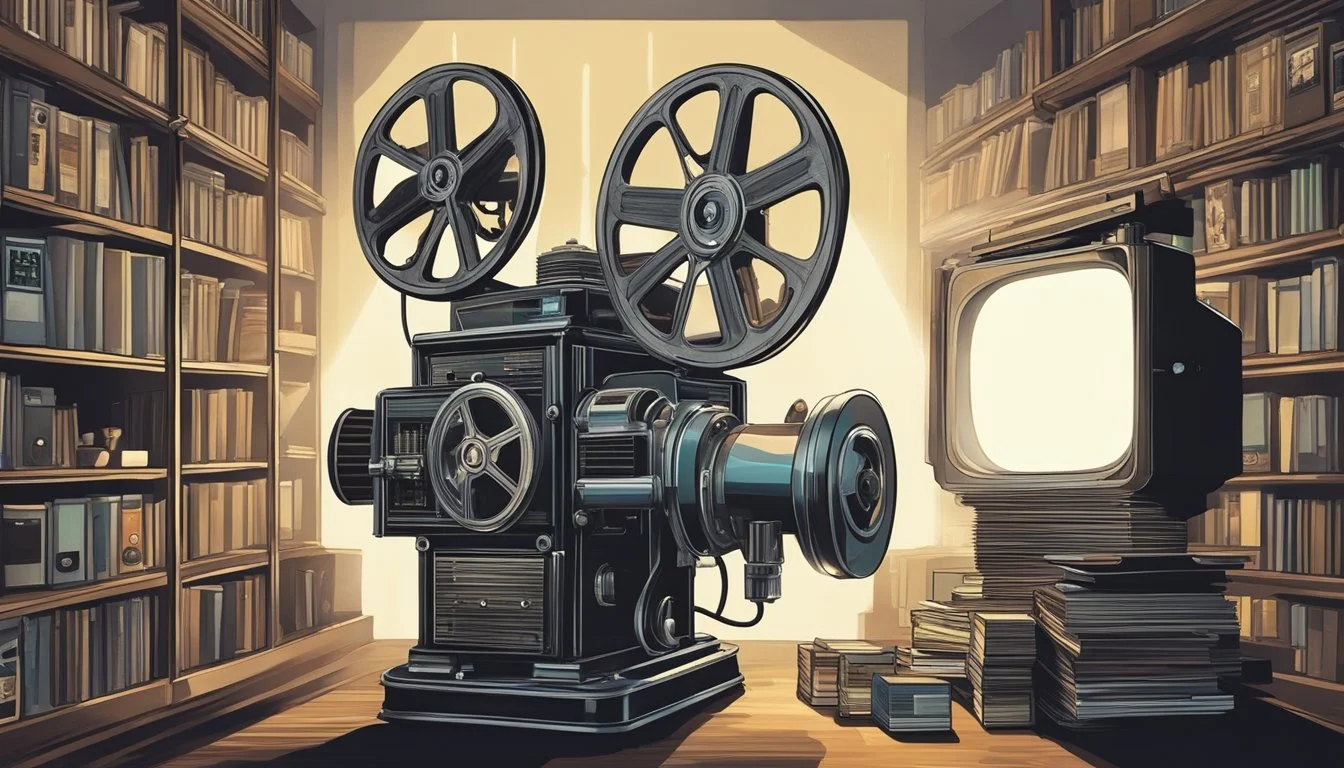Top Documentaries of 1988
Essential Viewing for Film Enthusiasts
1988 was a significant year for documentary filmmaking, producing several influential and thought-provoking works. These documentaries explored a wide range of topics, from social issues to personal stories, capturing the zeitgeist of the late 1980s.
The top documentaries of 1988 showcased the power of non-fiction storytelling and left a lasting impact on the genre. Many of these films continue to be studied and appreciated by audiences and critics alike, serving as benchmarks for documentary filmmaking. Their themes and techniques have inspired countless filmmakers in the decades since their release.
1) The Thin Blue Line (1988)
Errol Morris directed "The Thin Blue Line," a documentary that revolutionized the genre. The film examines the case of Randall Dale Adams, who was wrongly convicted of murdering a Dallas police officer in 1976.
Morris employs innovative techniques, including dramatic reenactments and a haunting score by Philip Glass. These elements help create a compelling narrative that questions the reliability of eyewitness testimony and exposes flaws in the criminal justice system.
The documentary presents interviews with key figures involved in the case, including Adams himself and David Harris, the man who later confessed to the crime. Through these interviews, Morris carefully unravels the events surrounding the murder and subsequent trial.
"The Thin Blue Line" had a significant real-world impact. Its revelations led to Adams' release from prison in 1989, a year after the film's release. This outcome solidified the documentary's reputation as a powerful tool for social change.
The film's influence extends beyond its immediate subject matter. It inspired other filmmakers to use similar techniques in their own documentary work, reshaping the landscape of non-fiction storytelling.
More information on The Thin Blue Line
2) Who Framed Roger Rabbit
Who Framed Roger Rabbit (1988) is a groundbreaking film that seamlessly blends live-action and animation. Directed by Robert Zemeckis, it stars Bob Hoskins as Eddie Valiant, a detective investigating a murder case involving the cartoon character Roger Rabbit.
The film is set in 1947 Los Angeles, where humans and animated characters coexist. When Marvin Acme is found dead, Roger Rabbit becomes the prime suspect. Valiant reluctantly agrees to help clear Roger's name, leading to a series of adventures and plot twists.
Who Framed Roger Rabbit is notable for its innovative special effects, which allow live actors to interact convincingly with animated characters. This technical achievement was unprecedented at the time and still impresses viewers today.
The movie's noir-inspired plot, clever humor, and homages to classic cartoons appealed to both adults and children. It features cameos from numerous iconic cartoon characters, including Mickey Mouse, Bugs Bunny, and Betty Boop.
Critics praised the film's creativity and technical prowess. It won three Academy Awards for its visual effects, sound effects editing, and film editing. Who Framed Roger Rabbit remains a beloved classic that showcases the magic of cinema.
3) Hôtel Terminus (1988)
Hôtel Terminus: The Life and Times of Klaus Barbie is a powerful documentary directed by Marcel Ophuls. The film explores the life of Nazi war criminal Klaus Barbie, known as the "Butcher of Lyon" for his brutal acts during World War II.
Ophuls meticulously examines Barbie's life, from his childhood through his time with the Gestapo in Lyon. The documentary covers Barbie's post-war activities, including his escape to Bolivia and eventual extradition to France in 1983.
The film combines archival footage with interviews of former Nazis, American intelligence officers, and Barbie's victims. Ophuls' approach is thorough, presenting a complex portrait of Barbie and the systems that allowed him to evade justice for decades.
At 267 minutes long, Hôtel Terminus is an exhaustive investigation into Barbie's life and crimes. The documentary won the Academy Award for Best Documentary Feature in 1989, cementing its place as a significant work in the genre.
Ophuls' film raises important questions about memory, justice, and the long-lasting impact of wartime atrocities. It stands as a crucial historical document and a testament to the power of investigative filmmaking.
More information on Hôtel Terminus
4) The Last Emperor
"The Last Emperor" (1987) is a biographical drama directed by Bernardo Bertolucci. The film chronicles the life of Puyi, China's final emperor, from his ascension to the throne as a child to his later years.
John Lone stars as the adult Puyi, portraying the complex journey of a man caught between two worlds. The film explores Puyi's transition from imperial ruler to ordinary citizen during China's tumultuous 20th century.
Bertolucci's epic won nine Academy Awards, including Best Picture and Best Director. Its stunning cinematography captures the opulence of the Forbidden City and the stark realities of Puyi's later life.
The film's narrative structure alternates between Puyi's imprisonment in the 1950s and his earlier life, providing a compelling look at Chinese history. It offers a nuanced portrayal of a man struggling with his identity and place in a changing world.
"The Last Emperor" is renowned for its historical accuracy and attention to detail. The production gained unprecedented access to film within the Forbidden City, adding to its authenticity.
More information on "The Last Emperor"
5) Shoah (1985)
Claude Lanzmann's "Shoah" is a groundbreaking documentary about the Holocaust. The film spans over nine hours and took eleven years to complete.
"Shoah" eschews archival footage, instead relying on interviews with survivors, witnesses, and perpetrators. Lanzmann visits Holocaust sites across Poland, including extermination camps.
The documentary is composed primarily of first-person testimonies. These accounts provide a raw and unfiltered look at the atrocities committed during World War II.
Critics have hailed "Shoah" as one of the greatest documentaries ever made. Its unflinching approach to the subject matter and extensive runtime set it apart from other Holocaust films.
The film's impact extends beyond its artistic merits. "Shoah" serves as a vital historical document, preserving the memories of those who experienced the Holocaust firsthand.
6) Eight Men Out (1988)
Eight Men Out is a historical sports drama directed by John Sayles. The film depicts the infamous Black Sox Scandal of 1919, when eight Chicago White Sox players were accused of intentionally losing the World Series.
Based on Eliot Asinof's 1963 book, the movie explores the motivations behind the players' decision to accept bribes from gamblers. It highlights the poor treatment and underpayment of players by team owner Charles Comiskey.
The film features a strong ensemble cast including John Cusack, Charlie Sheen, and D.B. Sweeney. It received critical acclaim for its accurate portrayal of early 20th-century baseball and the moral complexities of the scandal.
Eight Men Out stands out for its attention to historical detail and nuanced character development. It avoids simplistic judgments, instead presenting a balanced view of the events and the era's socioeconomic context.
The movie's realistic depiction of baseball games and period-accurate settings contribute to its authenticity. It remains a significant work in the sports film genre, offering insights into a pivotal moment in baseball history.
7) A Cry in the Dark (1988)
A Cry in the Dark tells the true story of Lindy Chamberlain, an Australian woman accused of murdering her baby daughter Azaria. The film recounts the events surrounding Azaria's disappearance during a family camping trip near Uluru in 1980.
Meryl Streep delivers a powerful performance as Lindy Chamberlain, capturing her struggle to prove her innocence against public scrutiny and a flawed justice system. Sam Neill co-stars as her husband Michael, providing strong support.
Director Fred Schepisi presents the facts of the case with careful attention to detail. The film explores how media sensationalism and public prejudice can influence legal proceedings and destroy lives.
A Cry in the Dark stands out for its unflinching look at a controversial case that divided Australia. It raises important questions about the nature of justice and the court of public opinion.
The film received critical acclaim and several award nominations, including Oscar and Golden Globe nods for Streep's portrayal of Lindy Chamberlain.
8) The Accidental Tourist (1988)
The Accidental Tourist is a drama film directed by Lawrence Kasdan. It stars William Hurt as Macon Leary, an emotionally distant travel guide writer struggling with personal tragedy.
The film explores themes of grief, relationships, and personal growth. Macon's life is upended after the death of his son and subsequent separation from his wife Sarah, played by Kathleen Turner.
Geena Davis portrays Muriel Pritchett, an eccentric dog trainer who brings unexpected change to Macon's carefully ordered world. Her performance earned her an Academy Award for Best Supporting Actress.
Based on Anne Tyler's novel, the film received critical acclaim for its sensitive portrayal of complex characters and relationships. It was nominated for four Academy Awards, including Best Picture.
The Accidental Tourist blends elements of drama and subtle humor to create a poignant exploration of human resilience and the capacity for change in the face of loss.
9) Powaqqatsi (1988)
Powaqqatsi is a non-narrative documentary film directed by Godfrey Reggio. It serves as the second installment in The Qatsi Trilogy, following the acclaimed Koyaanisqatsi.
The film's title is derived from a Hopi term meaning "parasitic way of life" or "life in transition." Powaqqatsi explores the impact of modernization on developing nations in the Southern Hemisphere.
Reggio employs stunning visuals and time-lapse photography to contrast traditional ways of life with the encroachment of industrialization. The film features no dialogue, relying instead on powerful imagery and Philip Glass's evocative musical score.
Powaqqatsi examines themes of cultural transformation, globalization, and the human cost of progress. It captures scenes of rural labor, urban development, and the collision between old and new ways of living.
Critics praised the film's visual artistry and thought-provoking approach to documenting societal change. Powaqqatsi continues to be recognized as a significant work of experimental cinema.
10) Wings of Desire (1987)
Wings of Desire is a German romantic fantasy film directed by Wim Wenders. The story takes place in Berlin, where invisible angels observe and listen to the thoughts of humans.
The film follows two angels, Damiel and Cassiel, as they watch over the city. Damiel becomes fascinated with a trapeze artist named Marion and considers giving up his immortality to experience human life.
Wings of Desire is known for its poetic visual style, blending black-and-white and color cinematography. The film explores themes of human existence, love, and the desire for connection.
Peter Falk, known for his role in Columbo, appears as himself in the movie. His character is a former angel who chose to become human, providing insight into the experience Damiel contemplates.
The film received critical acclaim for its unique perspective on the human condition and innovative storytelling techniques. It won multiple awards, including Best Director at the Cannes Film Festival.
More information on Wings of Desire
Historical Context of 1988
1988 marked a pivotal year in global politics, technological progress, and cultural shifts. The world witnessed significant changes that would shape the course of history in the coming decades.
Global Events and Trends
The Cold War began to thaw in 1988. Soviet leader Mikhail Gorbachev introduced glasnost and perestroika policies, leading to increased openness and economic reforms. The US Senate ratified the Intermediate-Range Nuclear Forces Treaty, reducing nuclear tensions between superpowers.
Pro-democracy movements gained momentum. Burma saw the 8888 Uprising, a series of nationwide protests against the military government. Pakistan elected Benazir Bhutto as Prime Minister, making her the first woman to lead a Muslim-majority nation.
The Iran-Iraq War, which had raged since 1980, finally came to an end. This conflict had significant implications for Middle Eastern geopolitics and global oil markets.
Technological Advancements
1988 saw rapid developments in computing and telecommunications. The first major computer virus, the Morris worm, spread across the internet, highlighting growing cybersecurity concerns.
CD-ROM technology became more widely available, revolutionizing data storage and distribution. This paved the way for multimedia applications and interactive software.
In space exploration, the Soviet Union launched its Buran space shuttle on its first and only flight. NASA resumed space shuttle flights following the Challenger disaster, marking a return to manned space missions.
The development of digital cellular networks accelerated, laying the groundwork for the mobile communication revolution of the 1990s.
Influence on Modern Documentaries
Documentaries from 1988 revolutionized the genre, introducing innovative storytelling techniques and leveraging new technologies. These films shaped the landscape for future documentary filmmakers.
Narrative Styles
The Thin Blue Line, released in 1988, pioneered a new approach to documentary storytelling. Director Errol Morris blended true crime elements with artistic filmmaking, creating a suspenseful narrative. This style influenced countless future documentaries, especially in the true crime genre.
Morris's use of dramatic reenactments and a non-linear structure challenged traditional documentary conventions. His approach encouraged filmmakers to experiment with narrative techniques typically reserved for fiction films.
The film's impact extended beyond stylistic choices. Its investigation into a wrongful conviction led to real-world consequences, inspiring future documentarians to pursue projects with tangible social impact.
Technological Impact
1988 marked a turning point in documentary production technology. The increasing availability of lightweight video cameras allowed filmmakers to capture more intimate and spontaneous footage.
This technological shift democratized documentary filmmaking, enabling a wider range of voices and perspectives to be heard. It paved the way for the rise of personal documentaries and first-person narratives in the following decades.
Advanced editing systems also became more accessible, allowing for more complex and nuanced storytelling. Filmmakers could now seamlessly integrate archival footage, interviews, and original material, creating richer, more layered narratives.
These technological advancements set the stage for the digital revolution in documentary filmmaking, which would fully unfold in the 21st century.








